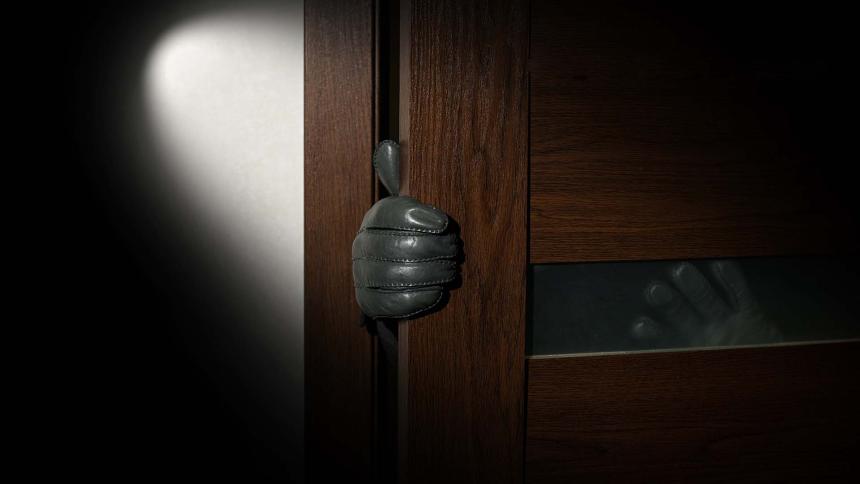
The hunt for the Night Stalker
Between 1992 and 2009, the area of South East London was held captive by a serial rapist and burglar who was suspected of over 100 offences. He targeted predominately elderly women who lived alone, breaking into their homes under the cover of night and subjecting them to unimaginable horrors. He became known as the Minstead Rapist and the Night Stalker before finally being identified in 2009.
The first recorded attack of the Night Stalker took place in October of 1992, when an elderly woman was targeted in her home in Shirley, Croydon. There was a respite for five years but afterwards, similar attacks on elderly women started being reported in south London, Surrey and Kent. In each attack, an elderly woman was awoken in the middle of the night to find an unidentified man in her bedroom. He would sexually assault the victim and then burglarise the home. A number of the assaults were so brutal that the victims needed to be hospitalised, some even in critical care.
According to a number of the victims, the Night Stalker would speak to them in a soft tone and some even reported that he would gently kiss them after committing the sustained sexual assault. One victim said that he shook her hand before leaving her home while others said that he would engage in conversation with them for hours. There were some instances wherein the Night Stalker was challenged by the homeowner and simply left without a fight.
The elusive Night Stalker would spend a lot of time studying his victims before finally targeting them. He would frequently hide in their garden for long periods of time just to ensure that the target truly was home alone. He most often struck during the middle of the night, concealed by darkness, and would gain entry to his victims’ homes from the rear or the side, either by simply opening the door, climbing through a window or even completely removing the pane of glass from the window. He then carried out a disturbing ritual in which he would unscrew the lightbulbs in the home, cut the electricity and rip out the telephone wires before entering his victim’s bedroom and waking them up with a flashlight.
One victim would relay her terrifying ordeal in The Times: ‘I thought my neighbour was being unusually noisy – then I heard a sound in the hallway and the next thing I knew there was a hooded man at the foot of my bed.’ (The Times, 7 July, 2004 – ‘Raped Twice at 88, the Victim’s Story’). It’s believed that the true number of victims of the Night Stalker is unknown due to the fact that some of the elderly victims may have been too upset or embarrassed to report the attack. In fact, police believe that he could have been active since 1987 despite the fact his first recorded attack wasn’t until 1992 (The Daily Telegraph, 25 March, 2011 – ‘Years of Fear’).
In 1998, police would link a number of burglaries and sexual assaults in the area and would dub the unidentified attacker: ‘The Night Stalker.’ The investigation into the string of shocking crimes led to the development of ‘Operation Minstead’ which was the largest investigation of its kind ever mounted by the Metropolitan Police. Over the years, they pursued thousands of lines of inquiry in an attempt to catch him. They would uncover that the man they were searching for was a black man with lighter-toned skin, between 25 to 45-years-old and around 5 feet 11 inches with an athletic build.
The Night Stalker left behind his DNA at a number of the crime scenes and that combined with physical descriptions of the attacker left police with more than 20,000 potential suspects. In 2011, Operation Minstead was taken over by Detective Superintendent Simon Morgan. While the Night Stalker had been careful to not leave behind any fingerprints, he had left a trail of DNA behind him in the form of semen.
In 2004, New Scotland Yard began working alongside DNAPrint Genomics in an attempt to identify the Night Stalker. DNAPrint Genomics was a developer of genomics-based products and services in biomedical and forensic markets. They would be using DNAPrint Genomic’s DNAWitness technology to analyse DNA that was recovered from a number of the crime scenes to get a better understanding of possible populations and personal characteristics of the attacker (Market Wire, 26 June, 2006 – ‘DNAPrint Genomics Scientist Delivers Presentation to Detectives at New Scotland Yard’).
DNAPrint Genomics would be able to establish that the Night Stalker’s ancestry was 82% sub-Saharan African, 12% Native American and 6% European with a couple of uncertain percentage points. This led them to believe that the Night Stalker’s family was from a Caribbean Island. Police working on the case then asked black employees at the New Scotland Yard to provide DNA samples so that the results could then be compared with the results of the Night Stalker’s DNA. They then asked black men in South London to do the same. The extensive DNA trawl was met with much controversy, with some accusing police of using it as a ploy to get members of the black community to voluntarily provide DNA samples. When some refused, they were sent what they felt were letters of a threatening nature.
Five years later, the investigation was taken over by Chief Inspector Colin Sutton who set up surveillance in Shirley, which was of the Night Stalker’s haunts. His so-called ‘Rat Trap’ would lead to a massive breakthrough in the case on the 14th of November, 2009, when they spotted a suspicious man running to his parked Vauxhall Zafira and speeding off. Police followed the car before pulling it over and searching it. Inside, they found a crowbar and a woolly hat (MyLondon, 20 September, 2021 – ‘Manhunt: Who is the South East London Night Stalker and How Was he Caught?’). The driver of the car would be arrested and identified as 51-year-old Delroy Grant, a married father of ten.
Grant was born in Kingston, Jamaica, on the 3rd of September, 1957. When he was two-years-old, his mother abandoned the family and Grant was brought to the United Kingdom by his father. In 1975, he married his first wife and four years later, they divorced while he was serving a prison sentence for armed robbery. This was the only criminal conviction Grant had; he was not on the DNA database. Grant later married Jennifer Richards, who suffered from multiple sclerosis. During the day, Grant would care for her and their four children, two from their relationship and two from Richards’ former marriage (MyLondon, 27 February, 2019 – ‘Neighbours of the Night Stalker Delroy Grant 10 Years On’). At night, however, Grant would commit some of the most heinous crimes that the United Kingdom had ever witnessed.
In a cruel twist of fate, it would be revealed that Grant could have been apprehended years earlier. In May of 1999, a witness saw a car at the scene of a burglary and gave police the car’s registration number. The car belonged to a man named Delroy Grant. However, police tracked down the wrong Delroy Grant and eliminated him from their inquiries when his DNA did not match the DNA at the scene (The Guardian, 24 March, 2011 – ‘How Delroy Grant Slipped Through the Police Net’ ). Then the following year, a Crimewatch viewer gave police the name Delroy Grant as a suspect once more but police ignored the tip because they had previously eliminated a man with that name from their inquiries. Commander Simon Foy, the head of homicide and serious crime at Scotland Yard, would apologise for the blunder. He said: ‘We are deeply sorry for the harm suffered by those other victims and for our failure to bring Grant to justice earlier’ (Surrey Advertiser, 24 March, 2011 – ‘Police Apology After Failure to Catch “Night Stalker”’).
In March of 2011, Delroy Grant was found guilty of 29 charges including burglary, rape, and sexual assault. It was just a fraction of the crimes he was suspected of committing. A psychologist would determine that Grant was a gerontophile which meant that he was sexually attracted to elderly women. He was handed four life sentences and ordered to serve a minimum of 27 years in prison. Unfortunately, many of Grant’s victims never lived to see justice served. The violent attacks had accelerated the deaths of a number of his victims, with many more spending their final years on earth physically and emotionally scarred by what he had put them through.








